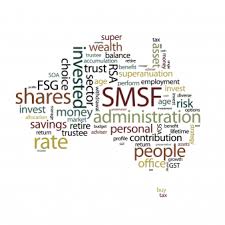You have a number of obligations as an SMSF trustee, and harsh penalties may apply if you fail to meet them. Here’s a checklist of important areas you’ll need to take into account each year.
Pay the minimum annual income stream amounts
If your SMSF pays out pensions, it must pay required minimum amounts each year. This amount is based on the ages of the members who receive the payments – starting at four per cent of the account balance for people aged under 65, and rising to 14 per cent for those 95 or over.
If your SMSF doesn’t pay out the required minimum amount, you may not be entitled to treat income or capital gains as exempt current pension income (ECPI) for the year. The ATO may show leniency if the failure is an honest mistake or was brought about by matters outside of the trustee’s control, but you shouldn’t count on this. Generally, failing to meet the minimum pension standards puts your fund at significant risk.
Value the fund’s assets
Asset valuation is important because it affects the returns for your fund’s members, as well as the overall performance of the SMSF sector. You need to value your SMSF’s assets at their market value as at 30 June.
If you follow the guidelines carefully, the ATO will generally accept the valuations you provide. However, the ATO may review valuations as part of its compliance processes.
There are also some specific considerations for certain asset classes. In the case of collectables and personal use assets, a qualified independent valuer must determine their market price. Listed securities should be valued at their market value on the relevant exchange as at 30 June.
You don’t necessarily have to have property assets externally valued, but the ATO suggests it’s wise to obtain an external valuation if property values have shifted significantly.
Obtain an actuarial certificate
You may need to obtain an actuarial certificate for your SMSF. This certificate determines the percentage of an SMSF’s income that will be exempt from tax for a given year. There are various situations when a certificate is required – although some of them are currently under Treasury review.
Generally, when an SMSF has both pension and non-pension accounts, and SMSF assets are not entirely segregated, an actuarial certificate is required. But if the fund’s members are all in accumulation mode, or all in pension mode all year, it may not be required.
There are various exceptions to these scenarios, so it’s always wise to get expert advice. Contact us if you’d like to discuss your specific fund’s situation.
Prepare end-of-financial-year accounts
Every SMSF must have financial accounts and statements prepared for the end of each financial year (EOFY). These are more than a simple income tax return – they also need to report super regulatory information and member contributions, and your fund needs to pay the SMSF supervisory levy.
Accounting software can be a great help with accounts and reporting, allowing you to automate certain transactions and helping to reduce errors.
Appoint an approved SMSF auditor
It’s mandatory to appoint an auditor who is approved by the Australian Securities and Investments Commission (ASIC). Your fund must make this appointment at least 45 days before the SMSF annual return is due.
It’s a good idea to check that your auditor has a solid track record of ensuring that SMSF clients achieve ATO compliance. In 2016, ASIC struck off 133 SMSF auditors and threatened a further 811 with deregistration. There are currently only around 6500 registered auditors available to assess over half a million Australian SMSFs, so speak to us if you need any recommendations.
Lodge your annual return by the due date
You can lodge your SMSF annual return yourself or through a tax agent, but it must be submitted by the due date or you risk penalties and the loss of your SMSF’s tax concessions.
The due date is generally 28 February if:
- you lodge the return yourself following the financial year; or
- your return is lodged through a tax agent and it’s your first year of submission.
Your agent may also advise you of a different due date.
The due date is generally 31 October if:
- you did not lodge your return for the previous financial year on time; or
- your SMSF is reviewed by the ATO at registration, even if the return is submitted by a tax agent.
Review your investment strategy
SMSF trustees are required to produce a documented review of their fund’s investment strategy every year. Doing the review presents a good opportunity to assess your fund’s performance, how it tracks against industry averages and how market forces have affected it. If your risk appetite has changed, this is a good time to change your investment strategy.
Maintain all fund records
Super laws mandate that all fund records must be saved, and kept in several main categories:
- records of payments received;
- records of expenses related to the payments received;
- records of acquiring or disposing of any asset;
- records of tax-deductible gifts, donations and contributions; and
- records of expenses for disability aids, attendant care or aged care.
Ensure that bills and receipts include information such as the Australian Business Number (ABN) of the supplier, the amount, the nature of the goods or services, and the date.
Compiling and maintaining all of the required records can be easier if your accounting processes are digitised (eg if you use accounting software). The ATO accepts scanned and electronic records.
Want to know more?
While some trustees are comfortable with managing their SMSF investments, many prefer to get professional help with the compliance requirements. If you’d like some extra guidance on managing your SMSF and fulfilling your annual obligations, talk to us today.
This article was featured in our January 2018 newsletter publication.
For further information of assistance with the latest superannuation reforms please contact our accountants in North Sydney.





